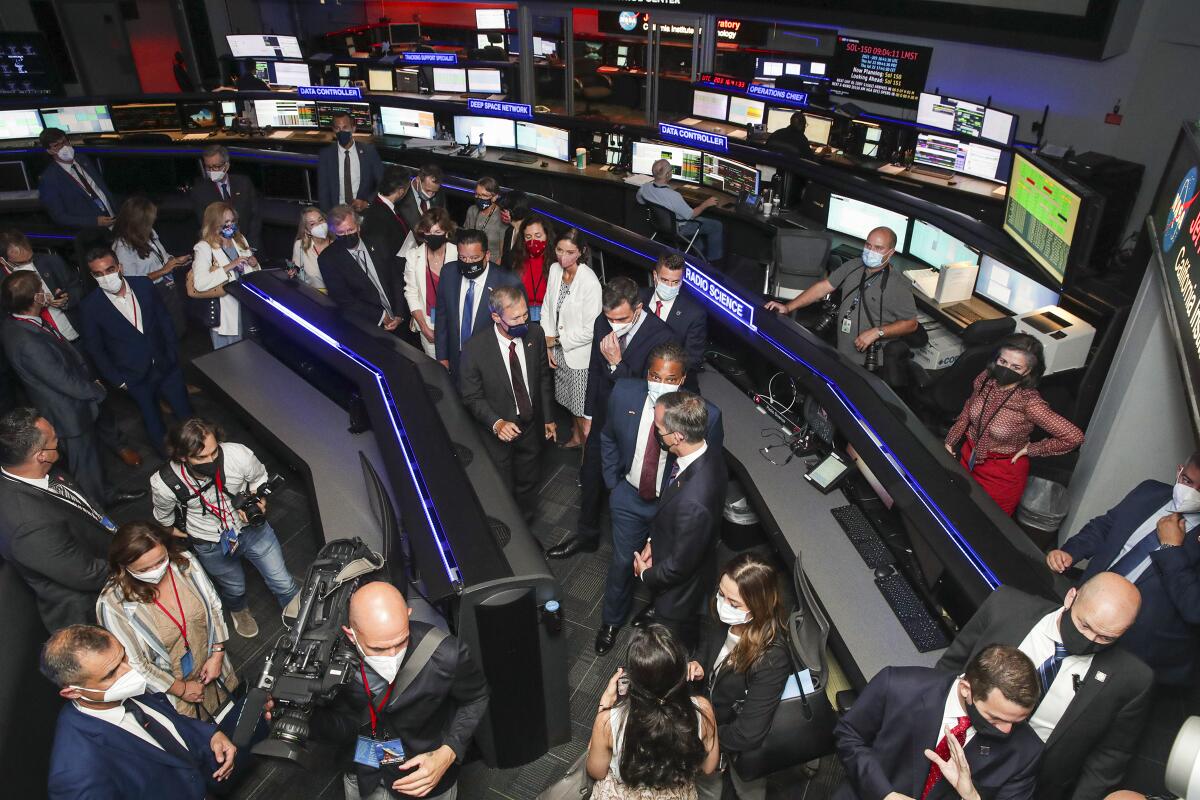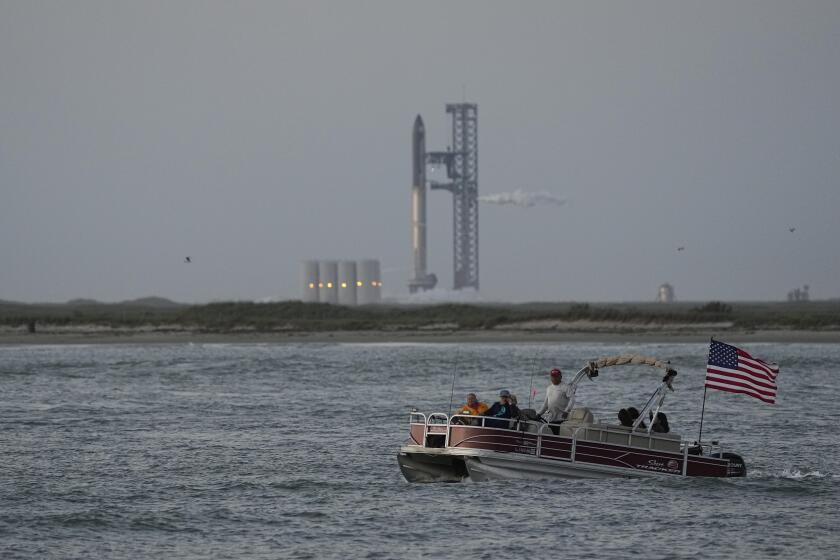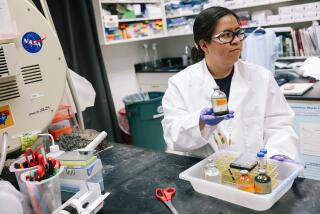Caltech receives $100-million gift to develop new technologies at the speed of SpaceX

Thirty-six years ago, Gary Brinson cracked open Stephen Hawking’s “A Brief History of Time,” a bestseller in which the renowned physicist sought to explain the mysteries of the universe in layman’s terms.
It accomplished more than that for the Chicago-based asset manager, igniting a decades-long interest in science — and, ultimately, leading to a $100-million donation to Caltech announced Thursday.
The gift from the donor’s philanthropic foundation will establish the Brinson Exploration Hub to speed the development of scientific breakthroughs and new technologies by the Pasadena university and the Jet Propulsion Laboratory.
The idea is to foster collaboration with industry and embrace the try-and-fail approach exemplified by SpaceX with its rocket development, potentially shaving years off the research and development process.
SpaceX’s giant Starship rocket, intended to take humans back to the moon and eventually to Mars, blasts off successfully from a Texas launchpad.
“We wanted to do something here that gives scientists the complete freedom to take risks, to come up with ideas and applications that they otherwise might feel frustrated in what let’s call the normal process of working with NASA and governmental agencies,” said Brinson, 80, in an interview from his winter home in Indian Wells, Calif.
Brinson, who has made multiple grants to Caltech over the last 20 years, had been considering where his foundation might place a $100-million gift to make the most impact when he was approached by the university and JPL about possibly funding the Hub, which he said “immediately resonated” with him.
“That book was sort of the departure point for me to start getting interested in all aspects of science, and that then really resulted in this,” he said.
The funded projects will be formulated by scientists and engineers at the university and JPL, the NASA R&D lab managed by Caltech. They might include small satellites to study the cosmos, the development of technologies to explore phenomena on other planets and programs to make observations on Earth following natural disasters. They will be selected through a competitive process.
“They need to be breakthrough exploration projects that drive scientific and societal benefit,” said newly appointed Hub director Mark Simons, a Caltech geophysics professor and former JPL chief scientist. “But we want to do this in an environment that looks for speed and agility and risk tolerance. [Now], everything has to work first and if you have a failure everybody starts wringing their hands.”
One project, for example, might involve studying the seismology of Venus through balloons that are tested first on Earth, or the deployment of small subsurface drones to study melting of Antarctic ice shelves.
“Maybe the solution is just to put 10 CPUs that you’re used to from your laptop and say, OK, we can tolerate the loss of three,” Simons said.
JPL director and Caltech vice president Laurie Leshin said that “whole SpaceX vibe of test, break it, test again, fly a lot is helping to drive some paradigm shift” — which is very unlike the traditional process of funding and carrying out JPL projects.
“Whenever we build a project for NASA, there are rules that we have to follow on how we manage programs, how we manage risk,” Leshin said. “We are stewarding taxpayer resources, so it’s very understandable that they want to have deep understanding of everything we’re doing and any risk we’re taking. And so that means things take longer and cost more.”
Just last week, SpaceX launched the third test flight of its Starship rocket that is planned for lunar and ultimately Mars missions. While its most successful flight yet, the rocket was still lost before it could splash down in the Indian Ocean.
SpaceX has a contract with NASA based on the Starship to develop a system for landing astronauts on the moon.
Traditional NASA projects at JPL might cost hundreds of millions of dollars or even billions of dollars, while Hub projects likely would cost in the tens of millions or less, Leshin said, noting SpaceX will launch a customer’s satellite from its Falcon 9 rocket for $1 million.
“Access to space has always been a huge barrier until very recently — it is really a game changer,” she said. “Right now, we tend to spend a lot of money on ground-based testing for that, but there’s no substitute for actually getting to fly new technology.”
The $100-million gift, which has been fully funded, is expected to generate several million dollars a year in income for the Hub, which could pay for some small projects; many would still need outside money and industry partnerships.
“We’re providing a $100-million blank canvas for the scientists to then take and paint — and hopefully come up with something that will resonate with all mankind,” Brinson said.
More to Read
Inside the business of entertainment
The Wide Shot brings you news, analysis and insights on everything from streaming wars to production — and what it all means for the future.
You may occasionally receive promotional content from the Los Angeles Times.












